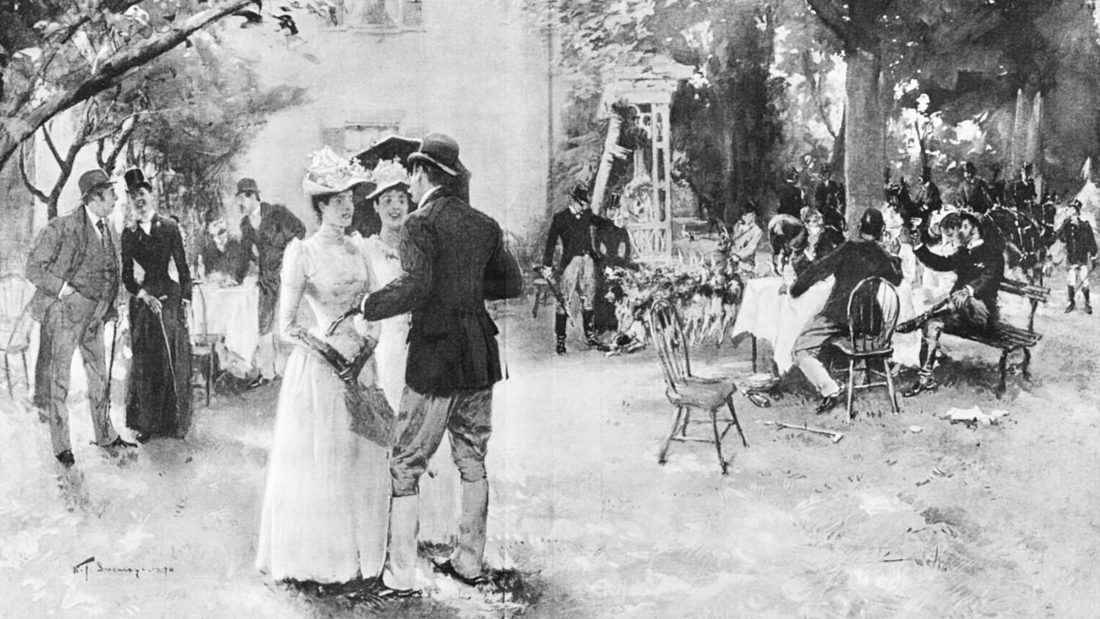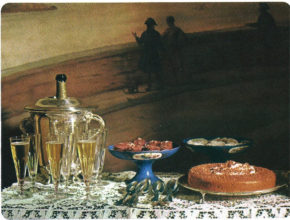“The breakfasts at which we entertain are usually held at anytime from eleven-thirty o’clock to twelve-thirty o’clock. As a matter of fact, a wedding breakfast after a noon ceremony will probably not get under way until early afternoon. Hunt breakfasts usually take place about noon after the riders return and those Sunday morning breakfasts, which we moderns are beginning to use more and more as a means of entertaining our friends, do not start until after church which is usually about noon.
The New American Etiquette by Lily Haworth Wallace, (1941)
I’m not going to get into the ethics of fox hunting so please don’t @ me. Fox hunting in a historical context just is and fox hunting breakfasts were a part of that practice.
I will say I love the idea of the “Fox-hunting” club in Lexington Kentucky that hold no-kill “hunts”; they keep all the pomp and splendor, but their purpose is to split up coyote packs that form on nearby farm lands. They have a series of these “hunts” over a few months during the season, (coyote packs reform in a few weeks and have to be split up over and over). They get all of the fun of the hunt and the end result is that they lower the amount of local pets and small livestock that are killed, while only deterring the coyotes. Just saying, I love the ingenuity.
Now that I’ve gotten that out of the way, I do need to mention that Hunt Breakfasts were not only for fox hunts. Country houses had all sorts of hunting depending on where the home was located. Birds might be shot, deer and elk too. Indeed, I was once told that a Scottish estate held similarly styled fishing breakfasts, since fly fishing was the house claim to fame. I haven’t had a chance to research that particular hunt breakfast yet.
The earliest hunt breakfasts were often all male affairs, as it would have been unheard of for women to hunt along side the men in the 18th century. Meals were hearty, in the field and often included copious amounts of alcohol. Occasionally, women would join the men later either in the field or at an estate, but either way it was still more often outdoors than in.
As you can see from the paintings below, the French had the “Hunt Lunch”. It appears to be basically the same as the British hunt breakfast, but with all the attendant national differences.
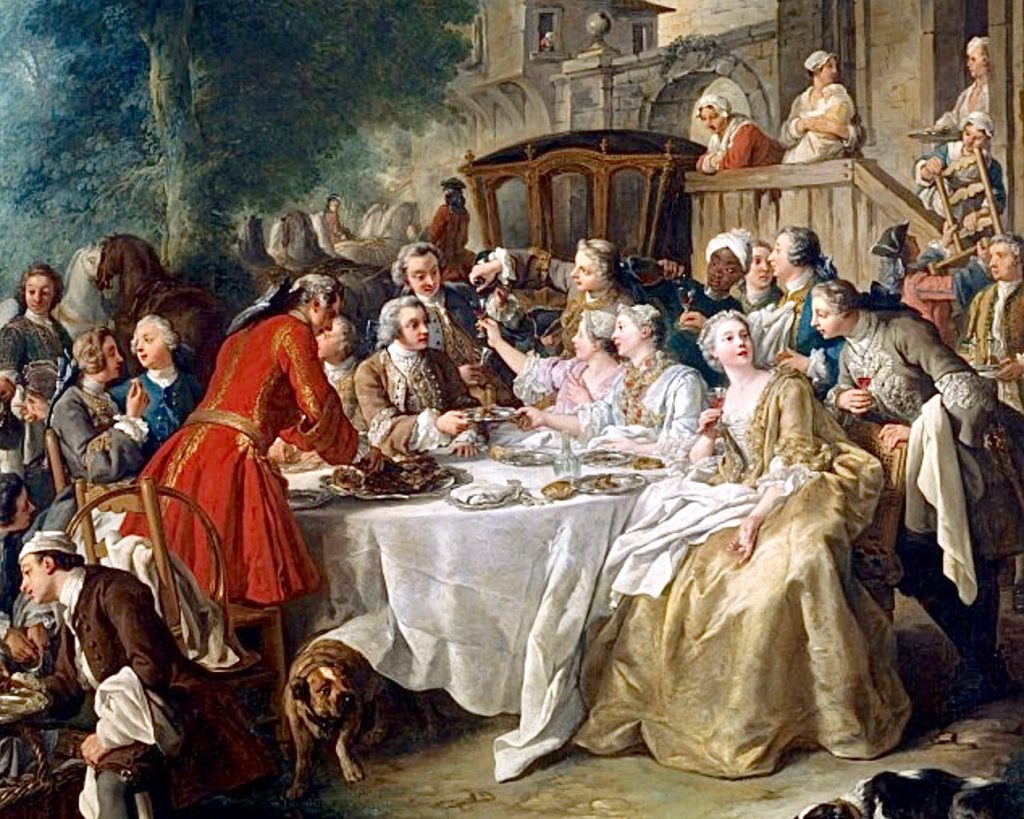
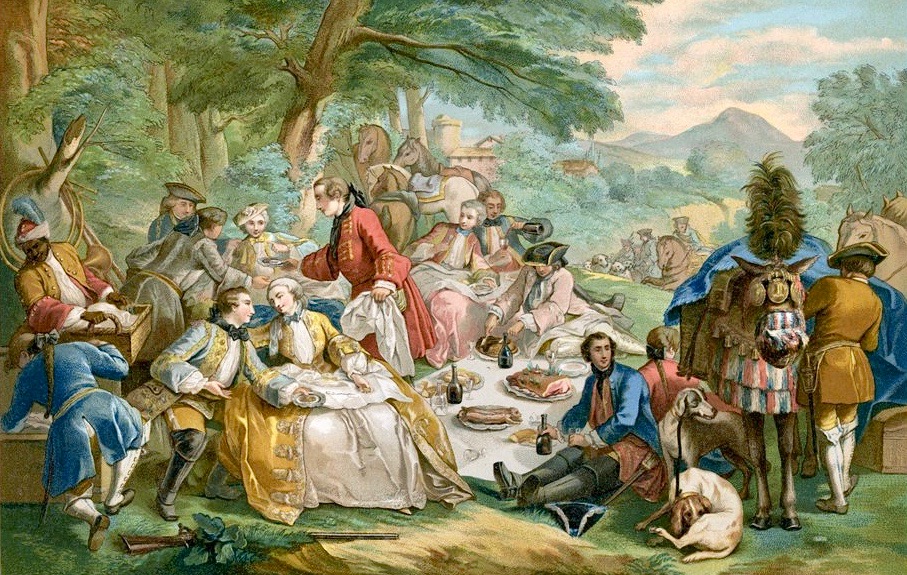
As time marched on and the 19th century dawned, hunt breakfasts moved indoors with the advent of men’s sporting clubs and later the country house weekend. Club events were still male only, but as the century progressed, more and more women not only participated in the hunt breakfast, but the hunt as well.
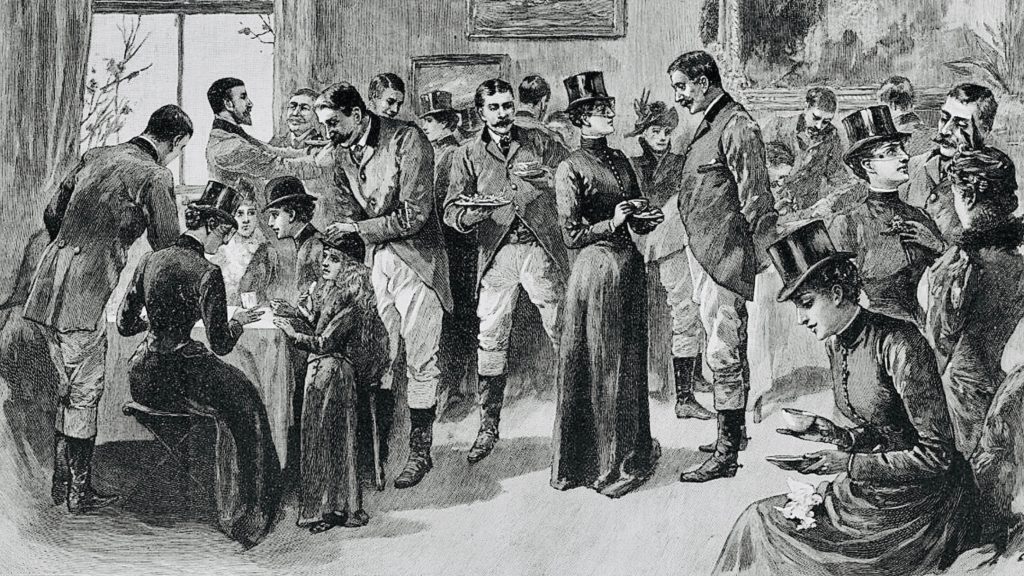
The Victorians codified the Hunt Breakfast into a buffet meal, modeling it on the country house breakfast and then elevating it. Dishes would be arranged on a side board with guests allowed to serve themselves. Where Hunt breakfasts deviate from other formal breakfasts is that some aspects of formal dinner can be observed. Place cards designating seating, even menu cards might appear depending on the size of the hunting party.
Tables would be laid out for the guests, with toast racks down the center of the table, as well as marmalade and jam, butter dishes that held butter curls over ice, (to keep them from melting) there also might be mayonnaise dishes and mustard pots. Staff might attend guests to refill glasses and to make sure that every need was met, but they would likely have stayed as discreet as possible.
The formality of Hunt Breakfasts varied country to country with France being somewhat more informal and Americans tending to be the most formal. Possibly this comes from the fact that many Americans who imported the Hunt Breakfast in the late 19th Century were aping the British aristocracy and were apt to go a bit overboard on the pomp and ceremony. But even in the US, where the formal breakfast was more likely to be served by staff, The Hunt Breakfast was almost always a buffet.
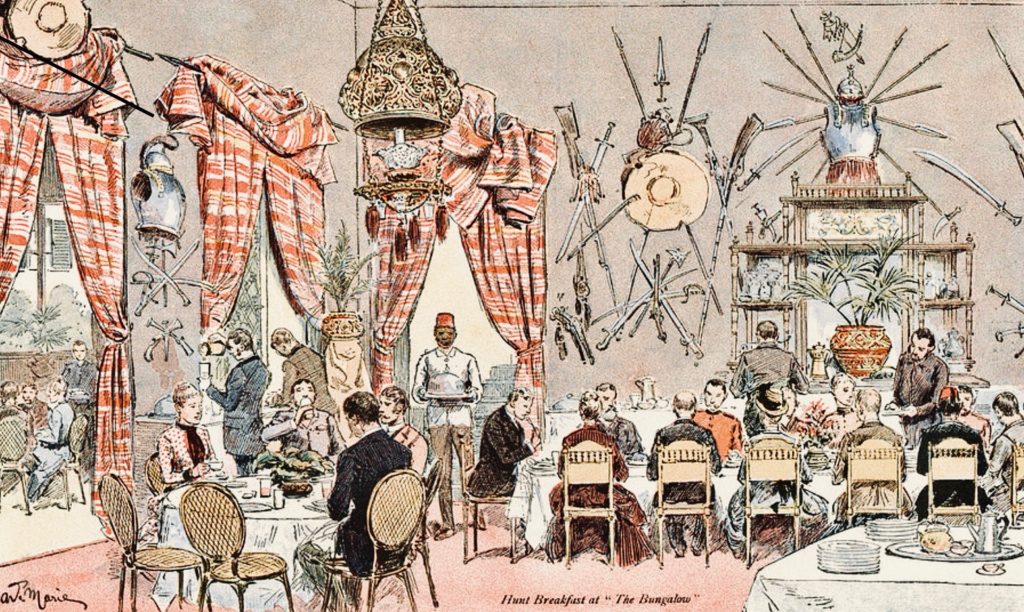
As with most forms of entertainment, the Edwardians elevated the hunt breakfast into a stunning show a status and elegance. Tables were laden with silver, arrayed in a precise and formal arrangement. There was an illusion that guests served themselves, all while the meal was orchestrated by a retinue of servants.
After the first world war, the hunt breakfast was held less and less. Where it did continue, it seemed to cling to the look and feel of its Edwardian pinnacle more than any other meal. Formal dinners became less formal, balls loosened up considerably, but the hunt breakfast seemed to be a last outpost for a bygone era.
By the late 1960’s and 70’s hunt breakfasts became rare indeed. Fox hunting began to be protested and hunting as a pastime for the rich fell out of favor. Hunting began to be associated with the stuffy and old, while becoming enlightened in Marrakesh or partying with rock stars was the new pastime for the young and wealthy. Hunts still occurred, just not as often and without as much fanfare.
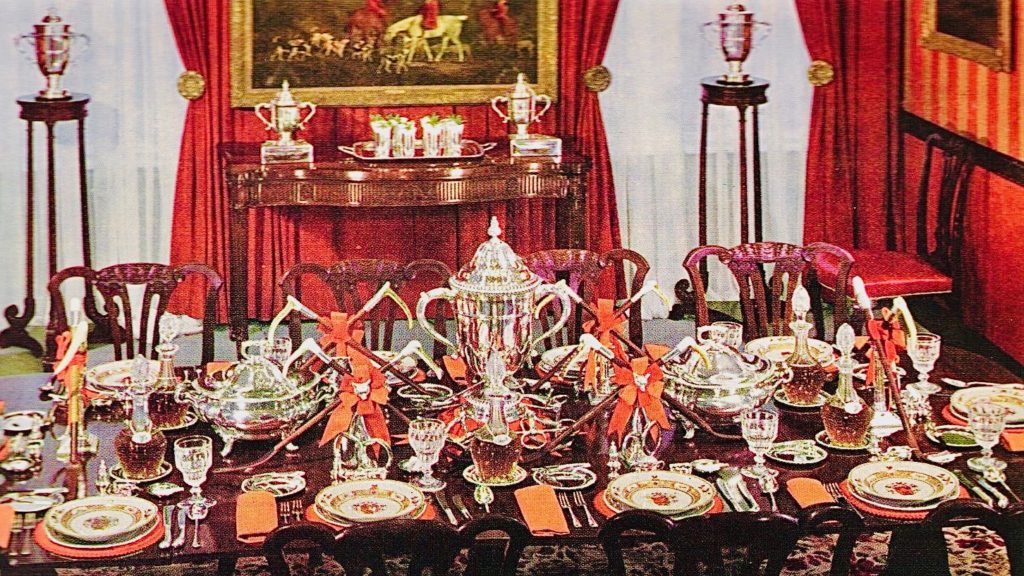
A short revival of the hunt breakfast occurred in the 1980’s coinciding with the Reagan/Thatcher years. Dynasty, Dallas and Lifestyles of the Rich and Famous contributed to a renewed interest into elite pastimes, but it was short lived.
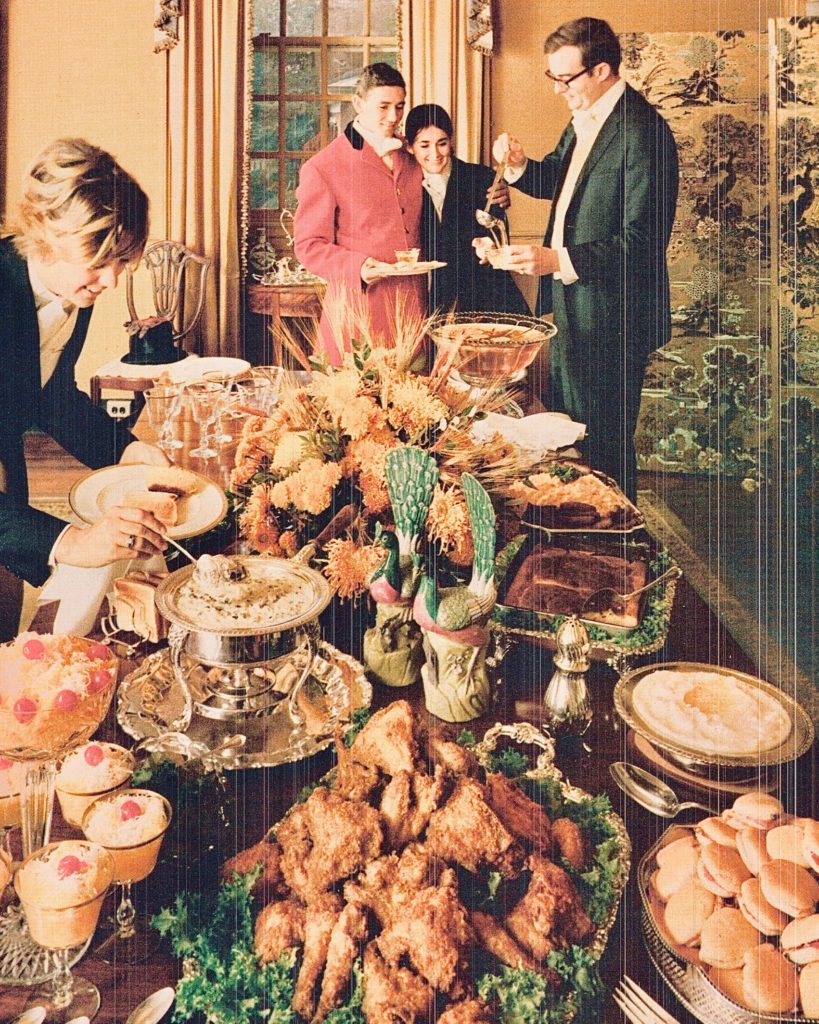
Now a days, a hunt style breakfast may be used for other animal related sporting events. Prior to a horserace or equestrian competition is a good excuse, but any outdoor sport that raises the appetite will do. You don’t even need to move, how about a hunt breakfast and a screening of Gosford Park or before the Kentucky Derby?
So, what do you think of the Hunt Breakfast? I’m a pescatarian, so you can probably guess I’m not going to hunt anything any time soon, but I love a late afternoon party. I’m tempted to throw something like this during the equestrian events at the Tokyo Olympics, let’s hope we can see each other by then.
I hope you’re all staying sane in these tough times. I’m sending you a warm hug and lots of love.
